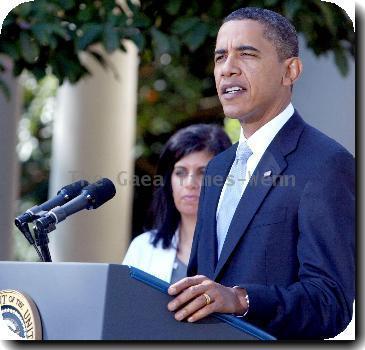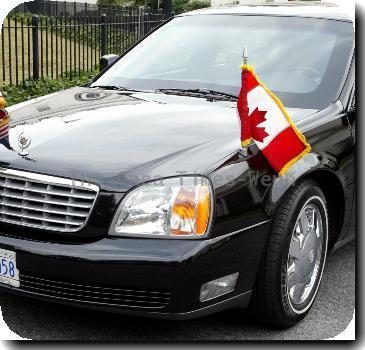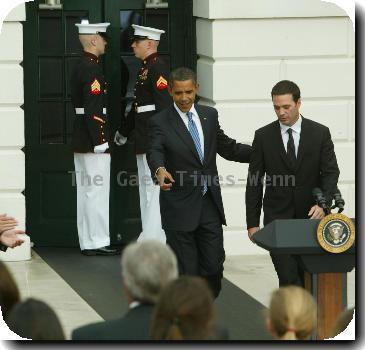Shades of FDR: Obama comes up with varied approach to confront worst recession since the 1930s
By Martin Crutsinger, APWednesday, December 9, 2009
Obama using grab-bag approach to fight recession
WASHINGTON — Franklin Roosevelt, confronted with the worst economic crisis in the nation’s history, wrote the book on government jobs programs. Since FDR, presidents have been less ambitious because the economic challenges they faced were less severe.
President Barack Obama, battling the worst downturn since FDR’s time, has put together a grab-bag program that borrows a little from Roosevelt but much more closely resembles the approach taken by recent presidents of both parties, who have leaned heavily on tax cuts to spur job creation.
Obama’s New Deal-lite approach represents a compromise between putting more resources into getting the country out of a recession and the limitations he faces with budget deficits that have already soared past the $1 trillion mark, raising concerns among the foreign investors who buy America’s debt.
Given those soaring deficits, Obama is not trying to push jobs programs of the scale that FDR used to fight the 1930s Depression, when he created an alphabet-soup collection of government agencies to put people back to work, from the Civilian Conservation Corps to the Works Progress Administration.
Instead, Obama is emphasizing further increases in infrastructure spending beyond what is already in the pipeline from the $787 billion economic stimulus bill.
Taking a page from past Republican and Democratic administrations, Obama also is proposing tax credits targeted to small businesses to help them hire new workers and give them a tax break for buying new equipment to expand and modernize their operations.
He also is proposing extending a number of programs already included in his February stimulus measure, including extra support to state and local governments to keep them from having to lay off workers.
“Obama is trying an eclectic approach to jump-starting employment growth and that is not surprising given that the labor market today is the worst it has been since the Great Depression,” said Mark Zandi, chief economist at Moody’s Economy.com.
Obama’s efforts are sizable compared with the stimulus measures offered by recent administrations — also not surprising, given that the recession that began in December 2007 is the longest and deepest since the 1930s.
President George W. Bush offered immediate tax rebates when he was trying to get the country out of the brief and mild downturn that hit during his first year in office.
Like Obama, Ronald Reagan also faced unemployment above 10 percent during his first term, but his answer to the 1981-82 recession was to emphasize a major tax cut that reduced the top tax rates. Reagan’s jobs program was a sizable military buildup that increased troop strength and bolstered employment among defense contractors.
Presidents Jimmy Carter and Gerald Ford also battled serious recessions in the 1970s, but their government stimulus efforts had to take into account soaring inflation from a series of oil shocks that gave the country a new economic worry: stagflation, a toxic mix of inflation and economic stagnation.
Just as Obama sought to highlight his efforts to bolster the economy with a jobs summit last week, a number of presidents have held high-level economic gatherings at the White House to showcase their concerns about various economic maladies.
Not all of those sessions have ended well. The Ford administration was ridiculed for its WIN buttons, standing for “Whip Inflation Now,” which proved as ineffective as Ford’s other ideas for curbing inflation.
Obama’s new proposals come with a price tag to be determined later. Obama said the government could afford the new efforts because the administration had just trimmed the ultimate cost of the unpopular Troubled Asset Relief Program by $200 billion. But his effort to capture bank bailout funds for further economic stimulus is already running into stiff opposition from Republicans.
Obama is seeking to split the difference between his worries over how a weak economy will affect Democrats’ chances in the 2010 elections and his concerns about soaring budget deficits. Republicans say all the TARP funds should go to reduce a budget deficit that soared to $1.42 trillion last year and is projected by the administration to remain above $1 trillion annually for the next two years.
Private economists said the program is likely to hit $200 billion or more after Democrats, who control Congress, get through massaging the plan. That would come on top of the $787 billion stimulus program passed in February.
Economists normally are skeptical of government jobs programs, arguing that by the time Congress manages to pass the program, the recession is usually over and the economy is generating jobs on its own. But as in the 1930s, the current downturn is viewed as severe enough to warrant government help.
In the Great Depression, unemployment hit 25 percent in 1933, the year that FDR took office. The unemployment rate this time around is expected to be nowhere near that level, but it could still surpass the post-World War II record of 10.8 percent set in 1982 before a sustained recovery takes hold next summer. The jobless rate is currently at 10 percent.
“Roosevelt’s efforts in the Great Depression gave a sense of hope to people who had lost hope,” said Nariman Behravesh, chief economist at IHS Global Insight. “In the current situation, Obama’s program is aimed at giving companies enough confidence to start hiring a little sooner than they otherwise would.”
Tags: Barack Obama, Conservatism, Government Programs, Labor Economy, North America, Prices, Reaganomics, Recessions And Depressions, United States, Washington



